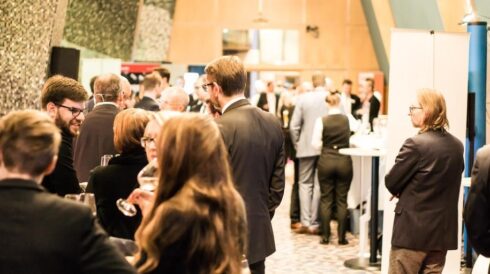
The 2022 tech event season started out with CES trying to overcome its disastrous 2021 remote conference by going back to the in-person model. The result was another disaster because attendance was extremely low.
Dell Technologies World a few months later was very well-attended but many people got sick and likely regretted their attendance. More recently, Microsoft’s Build event was entirely remote, well-attended, and well-executed but lacked the social benefits of an in-person show.
Of all these shows, Microsoft did the best job at hosting a remote event overall, and CES came off as the worst, with its attempt at a hybrid event that neither met the needs of those that were remote or who attended in person.
Overall, the event industry is struggling to deal with the new hybrid normal, but event tools still haven’t evolved to truly provide a remote experience strong enough to overcome a lack of the social nature of in-person events. The promise of the metaverse is that it could step in and provide the perfect remote experience that could be as good or better than in-person, but outside of simulations where it is performing well, the Metaverse is still hampered by expectations that are decades ahead of where the technology is now.
Let’s explore the train wreck of the events industry now and why we may eventually pivot back to in-person events as a result.
The problem
Keynotes and product presentations can be done better remotely than in person. In fact, many attendees would go to their hotel rooms and stream them because taking notes remotely is far easier than in person. Microsoft has showcased the advantage of having its own video production capabilities because those virtual events in terms of targeted content, entertainment value, and execution exceed most others I’ve seen so far this year.
But as good as product presentations and one-to-many events are virtually, the problem that hasn’t been effectively addressed is how to build relationships. The most beneficial part of in-person events are often the social events that surround the shows, which allow people to meet vendors and peers and create new relationships that can assist them in their jobs and careers.
With all the social media tools we have today, our ability to meaningfully make contact with new people and develop relationships from those meetings still isn’t working adequately, and people that are remote still feel they are missing out on some of the related critical opportunities that would otherwise result from an in-person event.
The social aspects of the in-person events have yet to be replicated by remote events, but with COVID-19 still active and increasing concerns surrounding transportation costs and disruptions, many are still not ready to return to in-person events, even though the momentum appears to be turning back to this format.
Metaverse promise
As I said earlier, the concept of the metaverse as a virtual environment that is indistinguishable from reality is attractive but not yet available. In addition, the typical hardware you need for the experience (two controllers and VR headset) don’t feel real, and the next generation of hardware, which includes haptic gloves and higher resolution headsets, is still far removed from the level of reality the metaverse promises.
In addition, the avatar technology is on the wrong side of the uncanny valley. The uncanny valley refers to an image that closely mimics a human but appears just enough off to be disturbing. Having a conversation with someone that looks like a mannequin has not created the collaborative relationship-building experience that the market hoped for. We are technically capable of creating photorealistic avatars, we just can’t yet do that at scale, and the use of headsets and other prosthetics to interact with the metaverse doesn’t yet feel real either.
While metaverse shops like Meta are building their platforms, they seem to be ignoring this problem and are rushing to market with inadequate virtual solutions that are almost certain to miss expectations and still fall short of the organizational needs for relationship-building. Ironically, Meta, which was previously known as Facebook, is the most powerful social media company, but it still doesn’t get what social media is supposed to be, that it isn’t just an ad platform, which is how Facebook generally makes its money.
Wrapping up: The bigger problem
This lack of social engagement common in remote events is also common in the hybrid workplace for remote workers. Many workers are planning to remain remote because a large percentage of them live in places that make commuting to work problematic. Yet, without deeper social engagement, the less connected employees are going to see an adverse impact on their careers due to this lack of social interaction. At companies that still allow employees to work remotely, when people do come into work to engage, they find the offices are mostly empty and that they are mostly alone at work, reducing their willingness to commute again.
Cisco and Dell stand out as the most aggressive at attempting to solve the problem of social engagement. Cisco is instrumenting its workers by providing information to managers that help them better address remote worker concerns and shortcomings. Dell has put in place managers who are focused on assuring employees who are coming into the office have at least some peers there at the same time for personal interaction and to reconfirm these employees are valued and not just a remote voice to be ignored.
In the end, whether we are talking about remote events or work from home, the need for a tool, (ironically) like the original Facebook that helped people create and nurture work relationships, is on the critical path to making remote events and remote work the new standard rather than just a declining leftover from the COVID-19 years.






